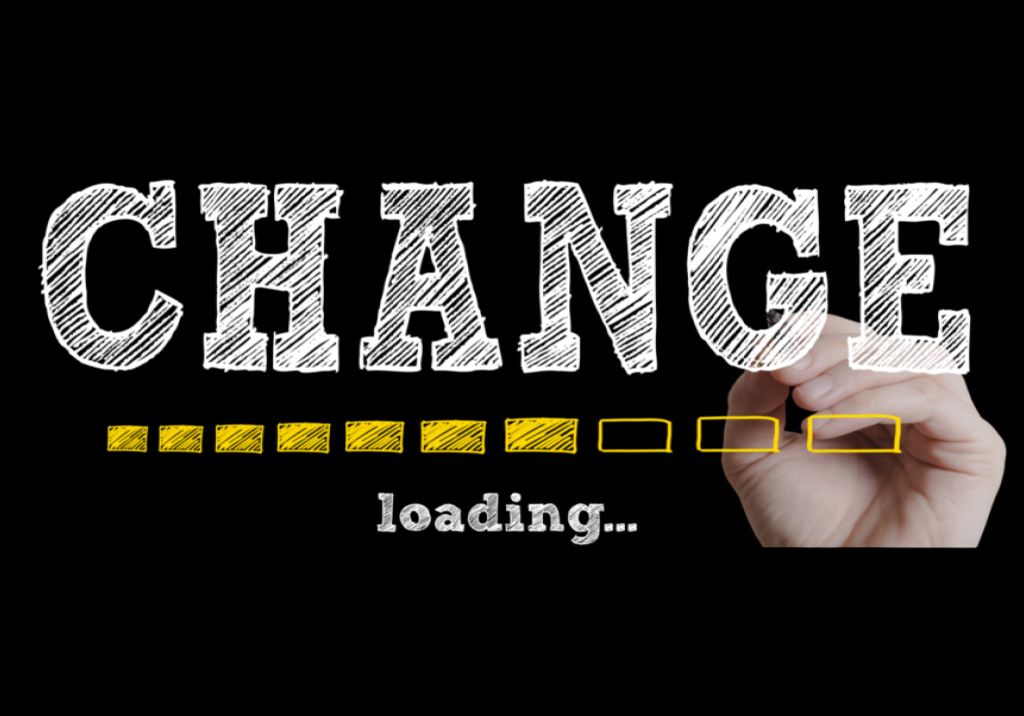One of the greatest afflictions of being human is believing in destination happiness. You know the phrases, “I’ll be happy when,” or “Once I have X, I’ll make some changes,” or “I don’t have time for that, but when things slow down, I will do…” I’m sure you’ve heard of an abundance vs. a scarcity mindset, but why do we keep talking about it? Intellectually having a scarcity mindset isn’t great. Still, it also feels just so darn natural.
The statements above, believe it or not, represent a scarcity mindset and can penetrate even the most positive and abundant thoughts from time to time. Henry Ford said, “Whether you think you can or think you can't, you’re right.” Our mindset and perspective regarding our environment create the reality in which we live. Overwhelming research has proven, through beliefs, your reality forms. If you believe you won't be happy until you make more money, you will consistently see and look for ways you are unhappy without more money. Why do we tend to see what we don’t have rather than what we do?
“If you look at what you have in life, you’ll always have more. If you look at what you don’t have in life, you’ll never have enough.”
Oprah Winfrey
As we mentioned in January’s article, Lead By Example: Change Enthusiasm Practice - Brene Brown’s research has shown we have 87 distinct words to describe different emotions, 69 of them are what we associate as negative. The negativity bias, or the negativity effect, developed by social psychologist Leon Festinger as cognitive dissonance, and later expanded by Paul Rozin, suggests that when positive and negative interactions are equal, the negative thoughts hold greater weight in our conscious and subconscious mind.
In real life - you get complimented on your smile or shirt numerous times throughout the day by many individuals, unprovoked. But just one person's negative comment sticks with you. It ends up outweighing the positive comments. This social psychology says it is natural. So, are we doomed towards negativity? Absolutely not. This idea means you must make opportunity and abundance seeking an actual practice because it is not our natural default. Practice doesn’t make perfect. Practice makes permanent. Not convinced? According to the National Study on Change in the Workplace, 67% of Americans actively choose how they experience change. Let’s look at more recent studies which confirm: living a longer and more fulfilling life requires that you practice a mindset of abundance; determine how you can start in small ways today.
The effect is astounding as the research continues to roll in about the differences both neurochemically and in practice between abundance v. scarcity mindsets. Neuroimaging suggests that a scarcity mindset affects neural mechanisms in real-time, underlying goal-directed decision-making. By believing you don’t have “enough,” your decision-making and brain wiring will change to fit the belief. This idea is especially true concerning limited resources and seasons of meager rations. Your brain changes to fit what you believe your circumstance to be. What’s worth noting is that the opposite is also true; having a mindset and belief of abundance during times of scarcity is less natural but can lead to state-changing decisions rather than a self-fulfilling prophecy.
The Change Enthusiasm® practice has three main components: the signal, the opportunity, and the choice. Last month, we discussed the first stage - The Signal. Stage two, the opportunity, is all about subtly shifting your mindset from one of scarcity to one which allows the exploration of the abundant possibilities that exist. One of the first and often most subtle ways to begin to work on the shift is to pay attention to the language you use concerning time.
Time as a regulation of measurement illustrates the uses of scarcity and abundance. You utilize time to regulate activities such as travel, diet, work, reproductivity, interaction with media, and social activities. Time can also be freeing and seemingly abundant. When you use technologies to fast-forward, rewind, or shift content, you feel in control of time itself. Social media has allowed us all the false sense of increasing speed of access and movement, processing, sharing, and information retrieval. We also think of time as a currency, or a shortcut the way time is hacked (spending time together or cutting time by finding another route). Time is then a conglomeration of what you make of it and what meaning you attach to it.
“Time you enjoy wasting is not wasted time.”
Marthe Troly-Curtin
Don’t spend time beating on a wall, hoping to transform it into a door.”
Coco Chanel
Research found that older individuals with more positive self-perceptions of aging through time, measured up to 23 years earlier (from end of life), lived 7.5 years longer than those with less positive self-perceptions of aging. The longer years remained after gender, socioeconomic status, loneliness, functional health, and age were included as co-variables. It was also found that this effect is partially affected by the will to live. In other words, those with positive perceptions of aging and the opportunity to use the time for living, discovery, and exploration lived longer, regardless of the factors we often associate with longer lives like social systems, resources, and gender. The mere presence and practice of a positive and abundant mindset towards aging results in living a longer life. You can prolong your life and the quality of living for those around you by working to shift your perspective from restriction to opportunity.
The Emergency Vehicle Operating Course (EVOC) training has designated sections for driving in inclement weather and maneuvers associated with collision avoidance, hazards on the road, and recovering an out-of-control vehicle. In each circumstance, the training focuses on the driver’s focus to where they want to drive the vehicle rather than the obstacle or space presenting danger. When the vehicle you're driving skids because of weather, or swerves to avoid a hazard, your focus is to avoid an accident. our focus should be on the space you want to go - rather than the space you are trying to avoid.
Imagine this: you are driving on a one-lane highway. Grass, a ditch, and forestry are just beyond the shoulder of the road in both directions. Suddenly, an accident occurs ahead of you, and you swerve toward the shoulder while braking - in your path, you see a ditch and trees, which seem to be getting closer and closer; you stare at them, trying to avoid the obstacles. You drive into the ditch and careen into the tree. This collision pattern represents the norm. The research emphasized in EVOC training says to focus on the flat ground and the open space between the trees, look for opportunities to direct your vehicle towards the greatest chance of safety, and your hands will follow where your eyes go. Wherever you look is where you’ll travel. The implications of this are profound.
Throughout life, you often imagine what you don’t want to happen or tell yourself the things you’re not going to do - only to find yourself repeating old patterns. EVOC training teaches us that focusing on those things directs your decision to wind up there, intentional or not. No one intends to hit a tree (unless it's the lesser of all the other dangers). Focus on the space between - focus on the patterns you want to reproduce, on the life you want to live, on the choices you want to make, rather than the things you want to avoid.
An Alzheimer’s study sought to understand why women have a higher frequency of diagnosis than men and how much mindset and the Alzheimer’s gene predict the emergence of the disease. A portion of the long-term study focused on women who had a predictor gene for Alzheimer's. The group of women all possessing the gene were divided into two groups. The control group consisted of women who focused on not developing Alzheimer's. The other group consisted of women who focused on aging well and did not put any particular focus or attention on the knowledge of possessing the gene. All groups were given brain health information and research about memory-supporting practices. In significant findings, the women who focused on not developing Alzheimer’s developed the disease. Those who focused on living well without implications of an impending diagnosis more often did not develop Alzheimer's or developed it much later in life.
Ready to put theory into practice? Here are 6 ways to shift your focus and begin your practice:
Explore negative emotions as signals for growth
Step into a conscious observer role of your negative thoughts and thoughts of scarcity. “I’m feeling incredibly angry. What am I angry about?” “I don’t have enough….” The same is true for fear, frustration, sadness, grief, and remorse. Ask yourself, “Why do I believe this?” a few times to get to a deeper meaning and ask yourself how these emotions show you a possibility for something new, for growth? For more about emotions as signals as a practice, dive into Cassandra Worthy’s book, Change Enthusiasm: How How to Harness the Power of Emotion for Leadership and Success
Surround yourself with others practicing abundance mindsets
Surround yourself with people who see opportunity, and you will too. Akin to having a lookout for the path between the trees while you drive; we are heavily influenced by the personalities and practices around us. As Nigerian spiritual leader T.B. Joshua says, “You are who you are by virtue of the company you keep.”
Focus on what you have - We know what you focus on becomes real through the above studies. A scarcity mindset, although perhaps more natural, focuses on what you lack or don’t have and sees limits instead of opportunities. Choose to place your focus on the skills, resources, and opportunities you HAVE and can work to increase over time.
Be an architect of win-win situations
Scarcity views all things in life as slices of pie; if someone has a slice, there’s less for you and others. Looks for ways in which both parties or all involved feel fulfilled and a sense of accomplishment. Incorporating this into personal and professional interactions could look like listening without judgment, presence in another’s company without expectation of reciprocation or anything transactional. (For ways to enhance these interactions, check out this two-part piece on empathy and active listening.
Incorporate daily gratitude
Research shows expressing gratitude positively affects mental and physical well-being. The act of being grateful also improves happiness and has long-term effects. Try a daily practice of writing down (pen-to-paper) 3 things, feelings, and experiences you are grateful for, and why, no matter how small.
Train your mind to look for and see possibilities and opportunities
Your brain doesn’t like being wrong. Whatever you tell yourself is true, your brain will look for evidence to support the hypothesis. When you focus intently on one thing, other options tend to evaporate. What you look for, you will find. Ever buy a car and then see it everywhere? Otherwise known as confirmation bias, you can flip the switch of this bias to look for more, and you will see more; more options, more choices, and more resources. Consider this: if you tell yourself, “I can’t do it,” You’ll fail in each attempt until you switch to supporting your efforts to “I can do this,” and your abilities will grow (with your actual capabilities) to match.









